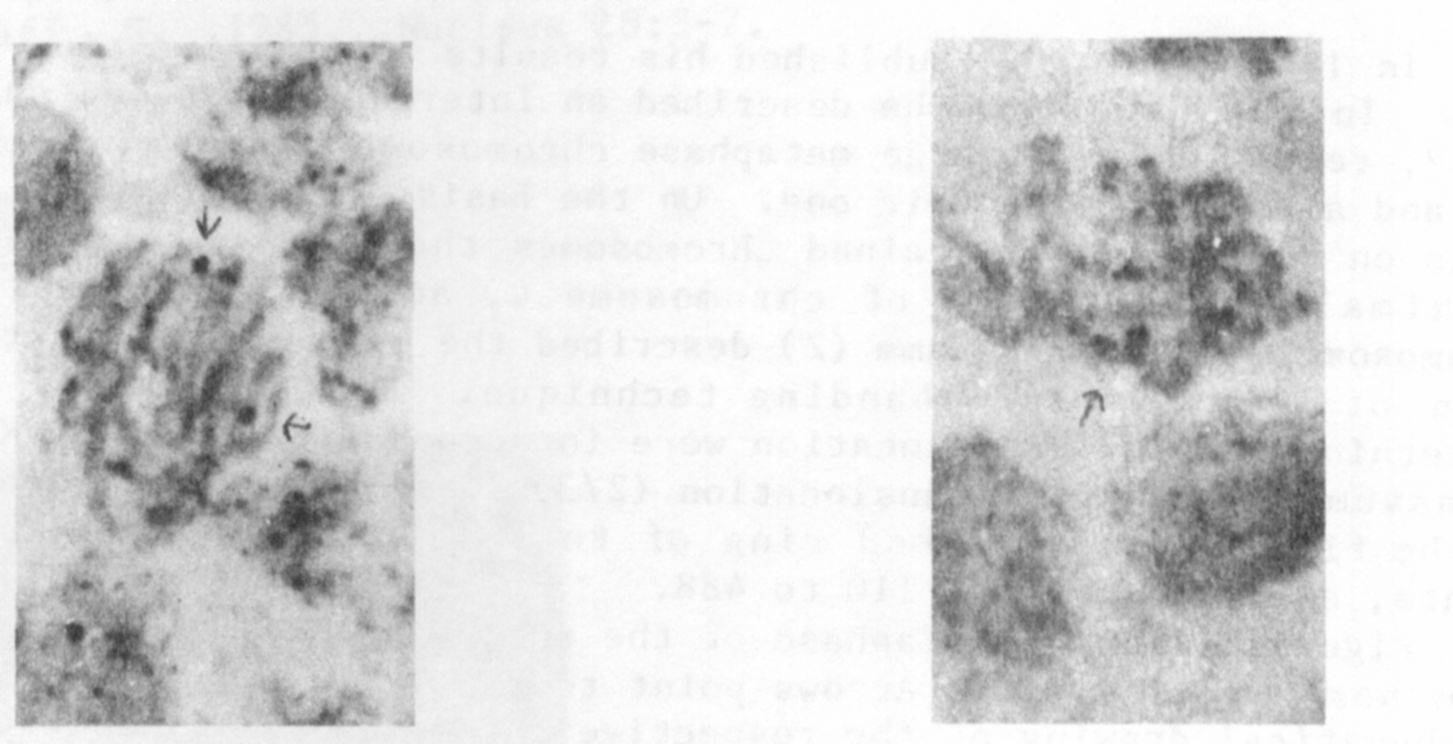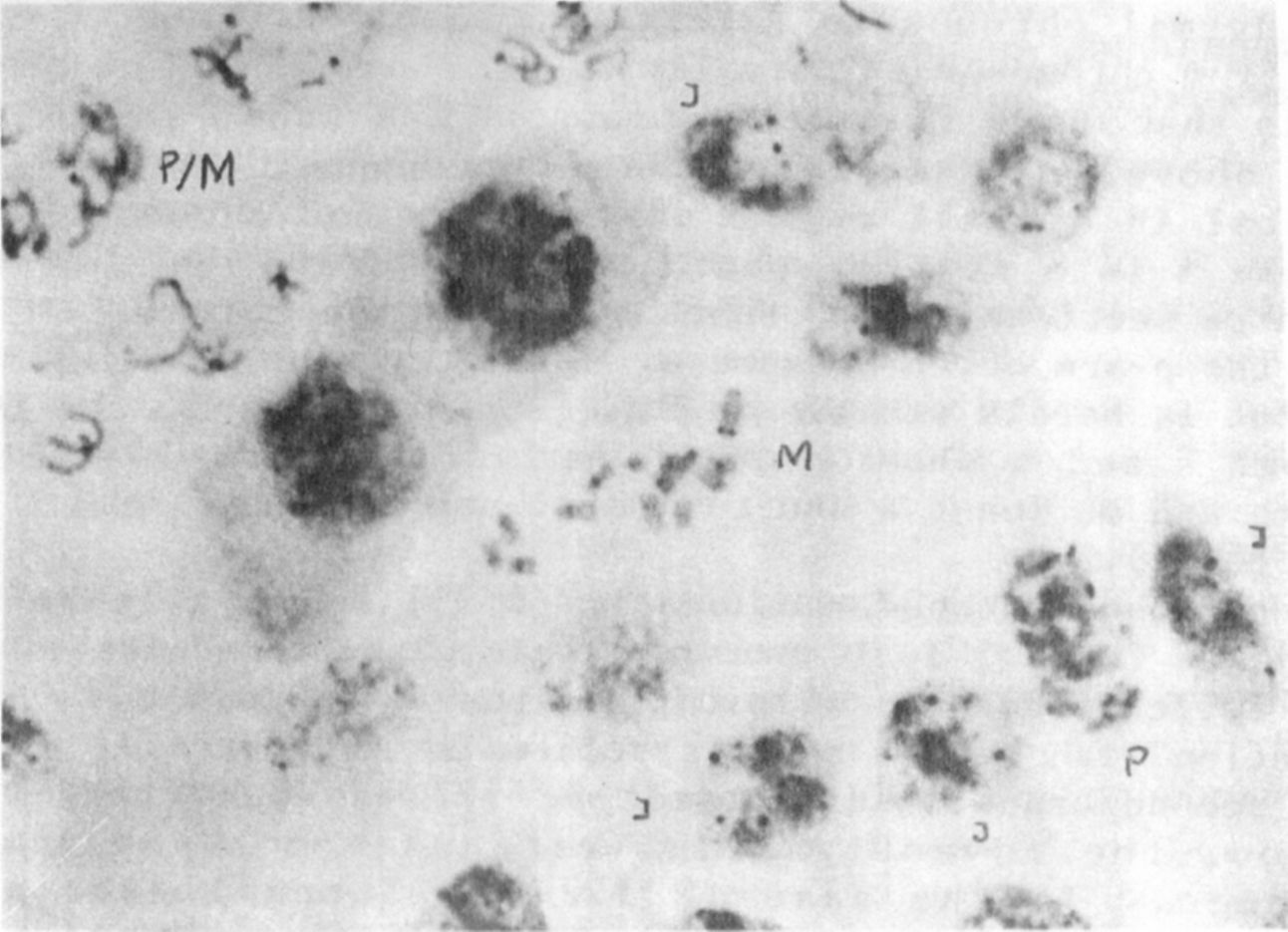As described earlier (1) Pisum chromosome 7 is characterized by a
very prominent heterochromatic block distal on the q-arm [long arm -Ed.]
near the secondary constriction (Fig. 1). These regions easily can be
recognized in Pro-/Metaphase nuclei and, in suitable preparations, even the
respective chromosomes can be identified as a whole (Fig. 2). In earlier
stages (P) these prominent regions likewise are visible. Figs. 4 through 6
show four prophases in different stages of development. Though in these
nuclei an identification of the respective chromosome is not possible,
because its total length cannot be followed, the characteristic
heterochromatic segment clearly marks the position of chromosome 7, or at
least that of its terminal region. In interphase all heterochromatin of
the chromosomes is visible as smaller or larger dots (Fig. 3). Yet, the
heterochromatin of chromosome 7 are largest and are clearly discernible
from the others (Fig. 3). This finding offers the possibility to inves-
tigate the position in relation to one another and within the interphase
nucleus.
In Fig. 7 several stages of mitosis are depicted. As clearly can be
recognized, the size of the heterochromatic block of chromosome 7 is more
or less unchanged in the course of development from interphase to
metaphase. This is further proof that heterochromatin remains heteropyc-
notic during interphase.
Close observation of the long P/M-chromosome shows an interesting
detail. The longitudinal magnification of the chromosomes reveals that
some further heterochromatic regions, other than those described (I), are
present, which are not visible in metaphase chromosomes because of their
strong spiralizat ion. The tiny bandings are concealed under these
conditions. In Fig. 2 such a tiny banding on the long arm of chromosome
7, adjacent to the large intercalary banding, is visible (arrow). In
addition, these extreme long chromosomes show that the centromere region,
in general, is a block of several small heterochromatic bandings (Fig. 2,
arrows).



